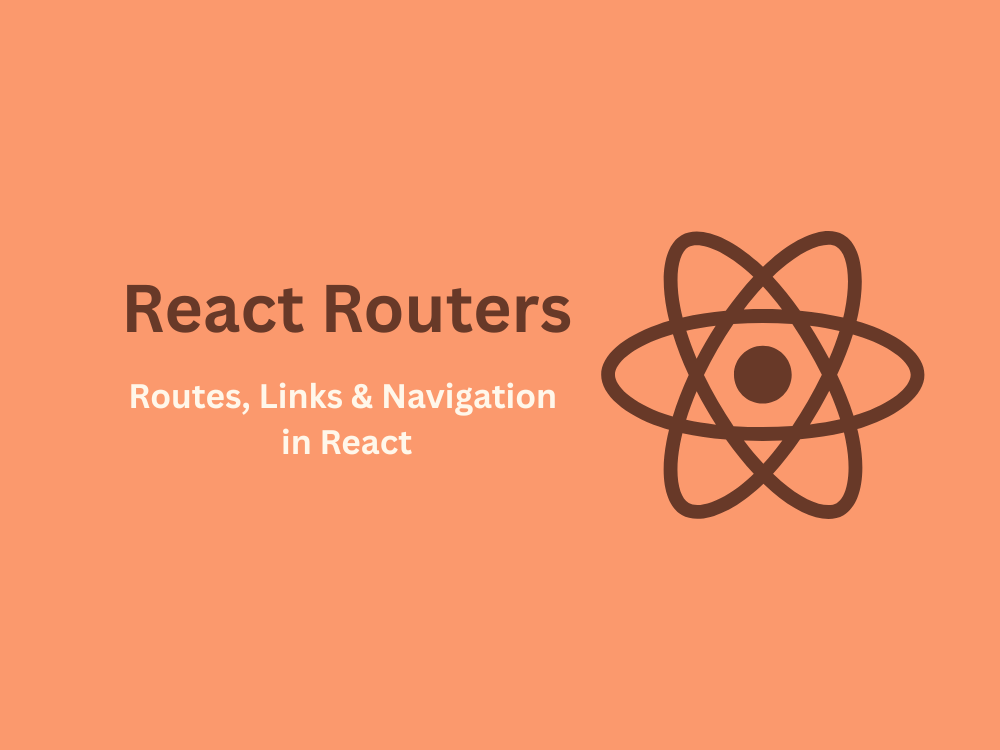
Day 18 – React Router Basics – Routes, Links & Navigation in React
So far in this series, all our React apps have been single-page applications (SPA) where everything renders in one place. But in real projects, we often need multiple pages:
- A Home Page
- An About Page
- A Contact Page
- A Dashboard Page
👉 This is where React Router comes in.
React Router is a popular library that allows us to:
- Create multiple pages inside a React app.
- Switch between them without reloading the browser.
- Pass props and state between pages.
Step 1 – Install React Router
In your React project, install React Router:
npm install react-router-domStep 2 – Setup Basic Routes
In your App.js:
import React from "react";
import { BrowserRouter as Router, Routes, Route } from "react-router-dom";
function Home() {
return <h2>Home Page</h2>;
}
function About() {
return <h2>About Page</h2>;
}
function Contact() {
return <h2>Contact Page</h2>;
}
function App() {
return (
<Router>
<Routes>
<Route path="/" element={<Home />} />
<Route path="/about" element={<About />} />
<Route path="/contact" element={<Contact />} />
</Routes>
</Router>
);
}
export default App;Explanation:
First, import the required components:
import { BrowserRouter as Router, Routes, Route } from "react-router-dom";What do these mean?
BrowserRouter(renamed asRouter)- This is the “main wrapper” for your app.
- It uses the browser’s history API to keep track of navigation.
- Without this, React Router won’t work.
Routes- Think of it as a container for all your routes.
- It checks the current URL and decides which
<Route>to render.
Route- Defines a path and the component that should render at that path.
- Example:
<Route path="/about" element={<About />} />This means → When the user visits/about, render the<About />component.
👉 We use as Router simply to make our code shorter. Instead of writing <BrowserRouter>, we can just write <Router>.
<Router>→ Wraps the entire app.<Routes>→ Holds all your routes.<Route>→ Defines a path and which component should render.
Now when you visit:
/→ Home Page/about→ About Page/contact→ Contact Page
Step 3 – Navigation with Links
Instead of using normal <a> tags, we use React Router’s Link component to switch pages without reloading:
import { Link } from "react-router-dom";
function Navbar() {
return (
<nav>
<Link to="/">Home</Link> |{" "}
<Link to="/about">About</Link> |{" "}
<Link to="/contact">Contact</Link>
</nav>
);
}Then include <Navbar /> in App.
👉 Now you can click links and move between pages instantly!
Step 4 – Using useNavigate for Programmatic Navigation
Sometimes you need to navigate via JavaScript (e.g., after login, redirect to dashboard). For that, use useNavigate:
import { useNavigate } from "react-router-dom";
function Login() {
const navigate = useNavigate();
const handleLogin = () => {
// imagine successful login
navigate("/dashboard");
};
return (
<div>
<h2>Login Page</h2>
<button onClick={handleLogin}>Login</button>
</div>
);
}Step 5 – Nested Routes
You can also nest routes inside another:
function Dashboard() {
return (
<div>
<h2>Dashboard</h2>
<Routes>
<Route path="profile" element={<h3>Profile Page</h3>} />
<Route path="settings" element={<h3>Settings Page</h3>} />
</Routes>
</div>
);
}Now:
/dashboard/profile→ Profile/dashboard/settings→ Settings
Example App Structure
App
┣ Navbar
┣ Home (/)
┣ About (/about)
┣ Contact (/contact)
┣ Dashboard (/dashboard)
┣ Profile (/dashboard/profile)
┣ Settings (/dashboard/settings)Internal Links
- Revisit Day 16 – Fetching Data to combine with routing for dynamic pages.
External Links
Conclusion
With React Router, we can build apps that feel like multi-page websites while keeping the efficiency of a single-page application (SPA).
👉 Next Blog (Day 19): Protected Routes & Auth Basics (login/logout flow)

